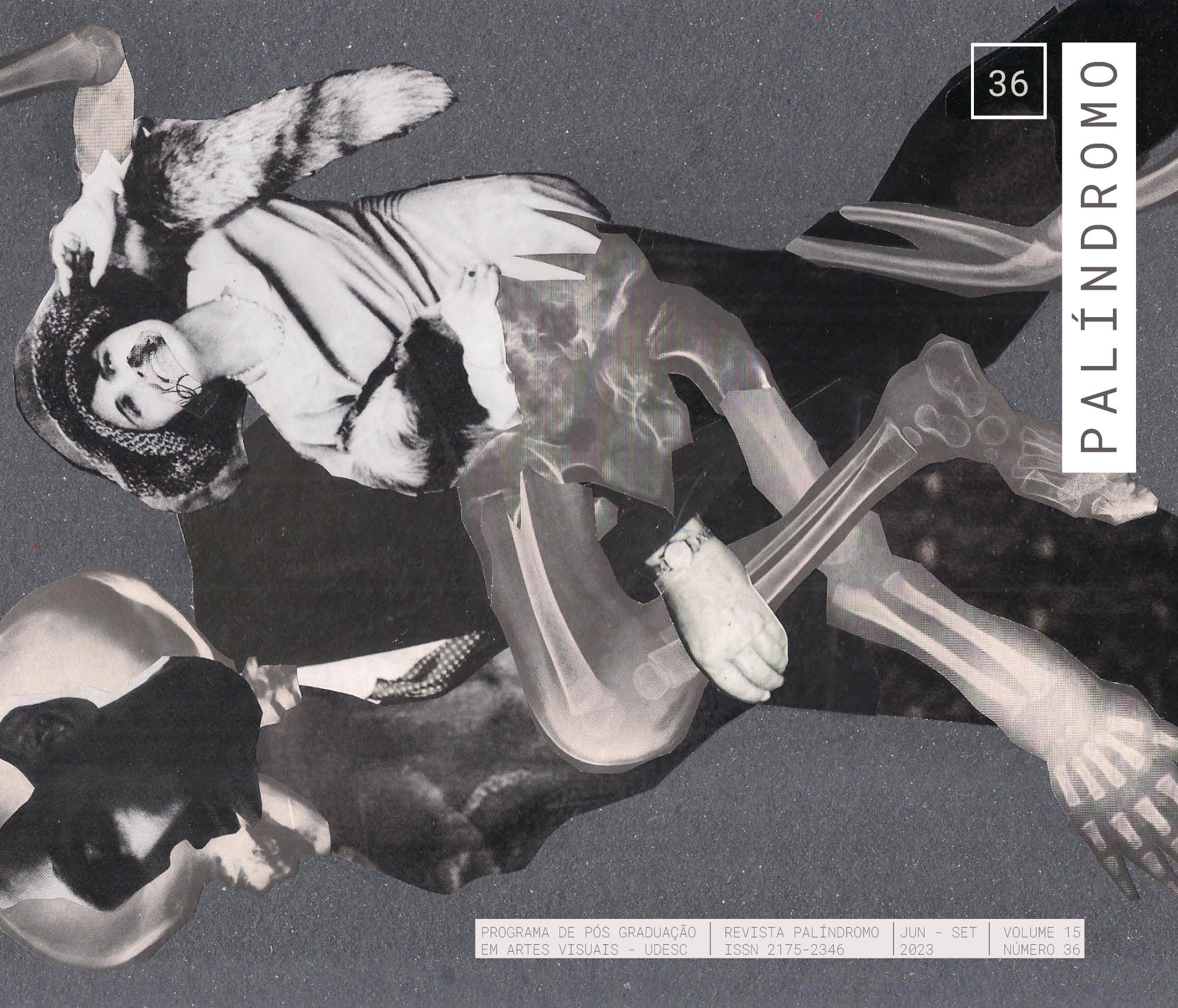Uma abordagem do grotesco na fotografia
DOI:
https://doi.org/10.5965/2175234615362023e0008Parole chiave:
fotografia, arte visual , grotescoAbstract
O Grotesco tem seu lugar nas categorias estéticas. Este lugar se intensificou quando artistas se afastaram da ideia do Belo como referência tradicional e hegemônica da Arte Visual e passaram a produzir obras que assumiam posições intencionalmente contrárias à concepção tradicional de Beleza Idealizada, investindo no Feio como atitude opositiva ou expressiva, especialmente a partir do momento em que as proposições experimentais e contestatórias foram adotadas no caminho para o Modernismo. A oposição dicotômica entre Belo e Feio possibilitou o desdobramento para o Grotesco na medida em que ele, o Grotesco, ao surgir da fealdade, levou alguns artistas a recorrerem ao uso de formas densas, intensas e até mesmo agressivas num segmento estético que passou a tematizar aspectos escatológicos, mórbidos e grotescos. Este é o motivo que levou ao desenvolvimento deste trabalho cujo objetivo é explanar as relações entre o atavismo que envolve as relações humanas com a morte e a morbidez usando imagens fotográficas e a aproximação com a semiótica discursiva para refletir sobre o Grotesco a partir de um núcleo opositivo fundamental: Beleza versus Feiura ou Grotesco como estratégia metodológica para análise da produção de sentido.
Downloads
Riferimenti bibliografici
BAKHTIN, Mikhail. A cultura popular na Idade Média e no Renascimento; o contexto de François Rabelais. 7a ed. Tradução de Yara Frayeschi Vieira. São Paulo: Hucitec, 2010.
DORRA, Raúl; LANDOWSKY, Eric; OLIVEIRA, Ana Claudia de, (orgs.). Semiótica, Estésis, Estética. São Paulo: Educ, 1999.
ECO, Umberto. História da Feiura. Rio de Janeiro: Record, 2007.
FLOCH, Jean-Marie. Alguns conceitos fundamentais em Semiótica Geral. Documentos de Estudo do Centro de Pesquisas Sociossemióticas. São Paulo: edições CPS, 2001.
GREIMAS, Algirdas Julien. Da imperfeição. São Paulo: Hacker Editores, 2002.
GREIMAS, Algirdas Julien, COURTÉS. Dicionário de Semiótica. São Paulo: Cultrix, Sd.
GROTESCO. In: Enciclopédia Itaú Cultural de Arte e Cultura Brasileira. São Paulo: Itaú Cultural, 2023. Disponível em: http://enciclopedia.itaucultural.org.br/termo4981/grotesco - 22/02/2023
PIETROFORTE, Antonio Vicente. Semiótica Visual: os percursos do olhar. São Paulo: Contexto, 2004.
SILVA, Ignácio Assis (org). Corpo e Sentido: a escuta do sensível. São Paulo: Editora Unesp, 1996.
Downloads
Pubblicato
Come citare
Fascicolo
Sezione
Licenza
Copyright (c) 2023 Isaac Antonio Camargo

TQuesto lavoro è fornito con la licenza Creative Commons Attribuzione 4.0 Internazionale.
DECLARAÇÃO DE DIREITOS AUTORAIS
a. Os artigos publicados pela revista são de uso gratuito, destinados a aplicações acadêmicas e não comerciais. Todos os direitos autorais são atribuídos à revista. Os artigos cujos autores são identificados representam a expressão do ponto de vista de seus autores e não a posição oficial da Revista Palíndromo. O (s) autor (es) compromete-se sempre que publicar material referente ao artigo publicado no Palíndromo mencionar esta publicação da seguinte forma:
Este artigo foi publicado originalmente pela revista Palíndromo em seu volume (coloque o volume), número (coloque o número) no ano de (coloque o ano) e pode ser acessado em: http://www.revistas.udesc.br/index.php/palindromo
b. Plágio, em todas as suas formas, constitui um comportamento antiético de publicação e é inaceitável. A revista Palíndromo utiliza o software iThenticate de controle de similaridade


